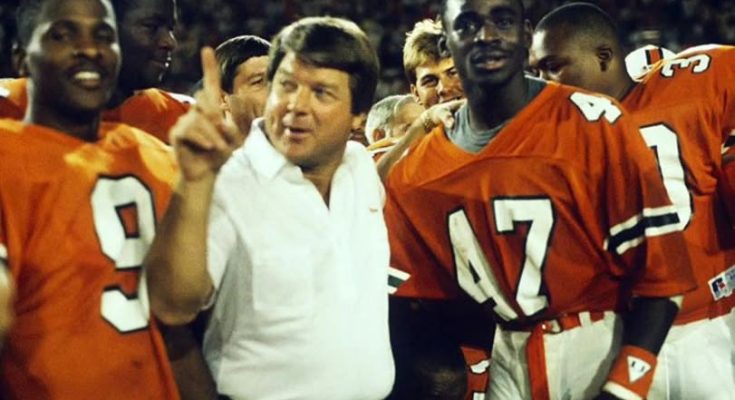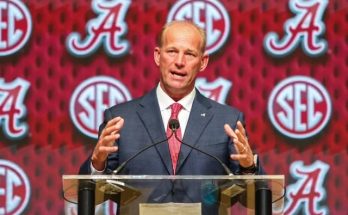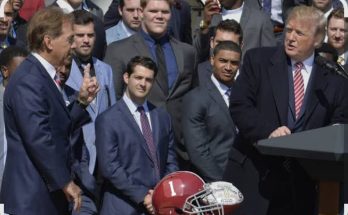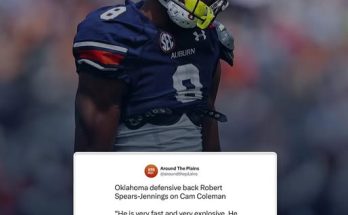Before Jimmy Johnson ever hoisted a Lombardi Trophy with the Dallas Cowboys, before his name became synonymous with NFL dominance, he was the architect of one of the most swagger-filled, feared, and controversial dynasties in college football history—the Miami Hurricanes of the mid-1980s. Johnson’s tenure from 1984 to 1988 didn’t just build a championship team; it redefined what it meant to dominate college football. He took a talented but volatile program and transformed it into a machine of intimidation, bravado, and precision. Under his leadership, “The U” became both a beacon of excellence and a lightning rod of controversy, a combination that ignited a cultural shift across the sport.
Jimmy Johnson inherited a Miami program that had already started climbing the ladder under Howard Schnellenberger, who led the Hurricanes to their first national title in 1983. But when Schnellenberger abruptly left for the USFL, many believed Miami’s brief rise might be just that—brief. Johnson, then the head coach at Oklahoma State, was a surprise choice to take over. Critics questioned whether he could maintain the program’s momentum. What followed over the next five years silenced any doubts, establishing Johnson not only as a master strategist but as a culture-defining leader.
Johnson’s arrival in Coral Gables marked a new era for the Hurricanes. Though his first season in 1984 ended with an 8–5 record and a disastrous 39–37 loss to Maryland in which Miami blew a 31–0 halftime lead, the foundation was being laid. He was installing a relentless system built around speed, aggression, and attitude. His defenses flew to the ball with ferocity. His offenses attacked with confidence and unpredictability. And most of all, he gave his players the freedom to be themselves—unapologetically, authentically, and loudly. That freedom became the soul of “The U.”
By 1985, Johnson’s vision was beginning to crystalize. The Hurricanes finished 10–2 and earned a No. 9 ranking in the final AP poll. But that was just the beginning. The breakthrough came in 1986 when Miami roared through the regular season undefeated at 11–0. The team featured future NFL stars like Vinny Testaverde, Michael Irvin, Bennie Blades, Jerome Brown, and Alonzo Highsmith. The Hurricanes were flashy, physical, and downright arrogant—and they were proud of it. They entered the Fiesta Bowl to face Penn State with a swagger that shocked traditionalists and thrilled their fans. The team got off the plane in Arizona wearing army fatigues, symbolizing they were at war. But in one of the most infamous upsets in college football history, Miami fell 14–10 to the Nittany Lions in a game marred by turnovers. Testaverde threw five interceptions, and Miami’s national title hopes were dashed.
That loss was a bitter pill, but it set the stage for the most dominant year in Johnson’s Miami tenure. In 1987, the Hurricanes returned with a vengeance. Led by sophomore quarterback Steve Walsh and anchored by an otherworldly defense, they tore through the season undefeated again, finishing 12–0. They beat Florida State 26–25 in a thriller, crushed Notre Dame 24–0 in South Bend, and overcame a tenacious Oklahoma team in the Orange Bowl to win the national championship. Johnson had completed the transformation. He had taken the raw materials Schnellenberger left behind and forged them into an unbreakable force. The 1987 Hurricanes weren’t just champions; they were cultural juggernauts.
What made Johnson’s Miami teams so polarizing and compelling was not just their talent, but their style. The players talked trash. They danced in the end zone. They wore flashy jewelry and showed up opposing teams at every opportunity. They were criticized for poor sportsmanship and praised for their authenticity in equal measure. Johnson didn’t try to suppress their personalities—he encouraged it. He understood that confidence breeds performance. He knew that fear can be a weapon, and the Hurricanes became the most intimidating team in college football history. Teams didn’t just lose to Miami—they were often humiliated.
Beneath the swagger, though, was a coach obsessed with discipline, preparation, and detail. Johnson’s teams weren’t just talking; they were walking the walk with unmatched preparation. Practices were intense, competitive, and full of energy. Johnson’s background as a defensive coach helped shape a unit that punished opponents. He believed in team speed over size, often playing converted linebackers at defensive end and safeties at linebacker to maximize quickness. He emphasized turnovers and attacking schemes. Offensively, he adapted to his personnel. With Testaverde, they threw the ball all over the field. With Walsh, they were more conservative but ruthlessly efficient.
His recruiting philosophy was also revolutionary. Johnson mined South Florida like a prospector digging for gold. He recruited speed, raw athleticism, and attitude. He wasn’t afraid to take on players with edge or baggage, knowing that if he could channel their fire, they’d become stars. He targeted under-the-radar athletes who fit his mold: fast, fearless, and hungry. Johnson was among the first major college coaches to fully embrace the growing pool of Black athletes in South Florida, recognizing not only their athletic talent but the cultural connection they had with the style of play he wanted. The result was a roster brimming with NFL-caliber players who knew they were better than their opponents—and let them know it.
From 1984 to 1988, Johnson’s Hurricanes compiled a staggering 52–9 record. They went undefeated at home for four straight seasons. They beat programs like Notre Dame, Oklahoma, Florida State, and Florida with regularity. They produced Heisman winners, All-Americans, and a pipeline to the NFL that continues to this day. But more than just wins, Johnson created a brand. “The U” became an identity, a movement, a defiant middle finger to college football’s blue-blood establishment. Miami didn’t care about tradition. They weren’t trying to be Notre Dame or Alabama. They were trying to be themselves—loud, brash, brilliant.
It wasn’t always smooth. Johnson’s teams often attracted NCAA scrutiny. Critics accused the program of harboring thugs and encouraging chaos. Sideline brawls, showboating, and locker room antics became staples of the Hurricanes’ image. But Johnson never flinched. He protected his players and pushed back against the moral panic that surrounded the program. He understood that the criticism wasn’t just about behavior—it was about control. Miami was a team of predominantly Black players from inner cities dominating a sport long dominated by traditional powers, and their refusal to conform made them a threat.
By the end of the 1988 season, Johnson had done all he could do at Miami. Though the team lost a heartbreaking regular season finale to Notre Dame that year in the infamous “Catholics vs. Convicts” game, they still finished 11–1 and ranked second in the country. Johnson was now the most coveted coach in football. When Jerry Jones bought the Dallas Cowboys in early 1989, he tapped his former Arkansas teammate to take over a rebuilding NFL franchise. Johnson left “The U” not just as a national champion, but as a cultural icon.
The legacy he left behind at Miami is impossible to overstate. His tenure elevated the program into the national elite and set the tone for two more national championships in 1989 and 1991 under Dennis Erickson, who largely followed Johnson’s blueprint. The Hurricanes of the 1980s became the blueprint for swagger-driven success—an unapologetic declaration that excellence didn’t have to come in a three-piece suit. It could wear chains, talk trash, and still win games. Johnson showed the world that authenticity, when combined with discipline and strategy, could dominate the sport.
Today, when college football fans think of swagger, they think of Miami. When they think of dominance with attitude, they remember Jerome Brown saying, “Did the Japanese go sit down and have dinner with Pearl Harbor before they bombed them?” before the 1987 Oklahoma game. They remember the dance moves, the hits, the speed, the mystique. And behind it all was Jimmy Johnson, the cool, confident coach with the perfectly sculpted hair and the relentless drive to win.
Before he won Super Bowls with the Cowboys. Before he became a staple on Fox’s NFL pregame show. Before he was inducted into the Pro Football Hall of Fame. Jimmy Johnson built a monster at Miami. And for five years, that monster changed the face of college football forever.



